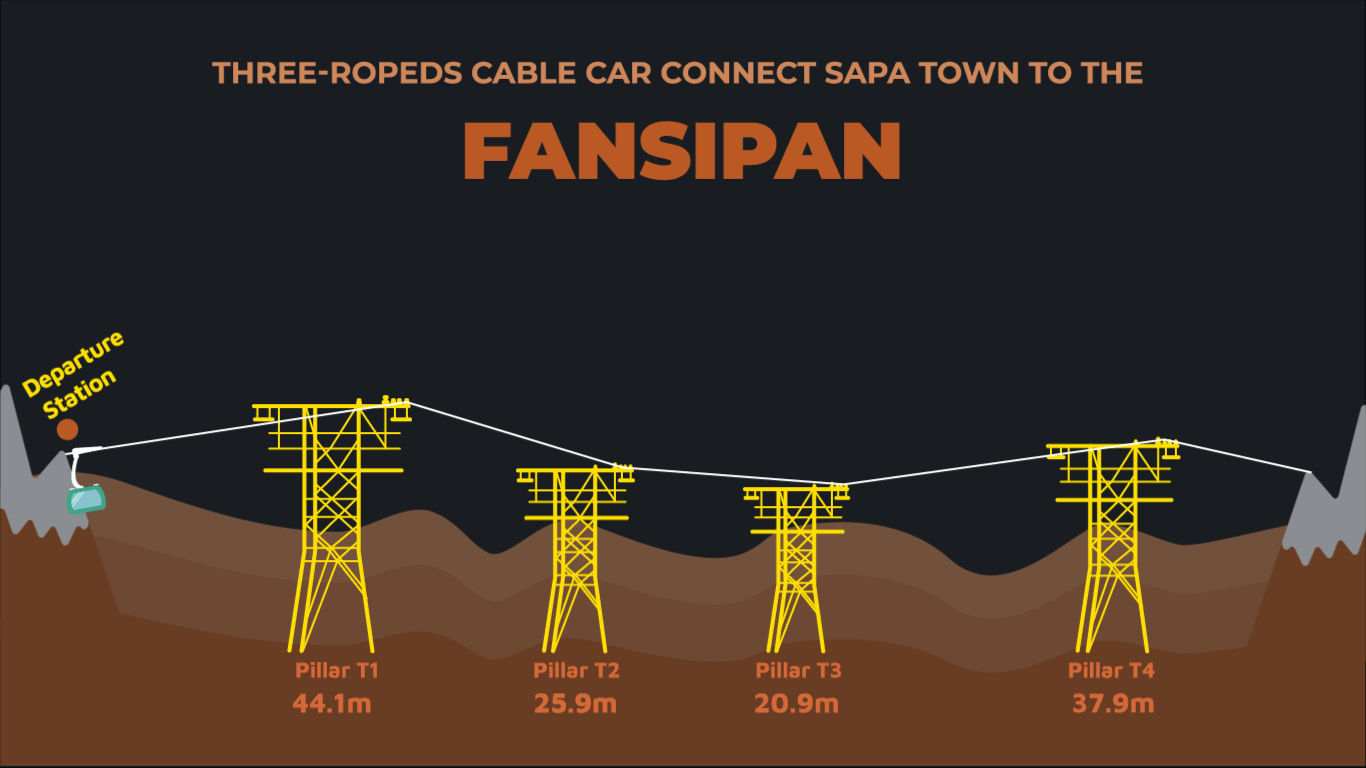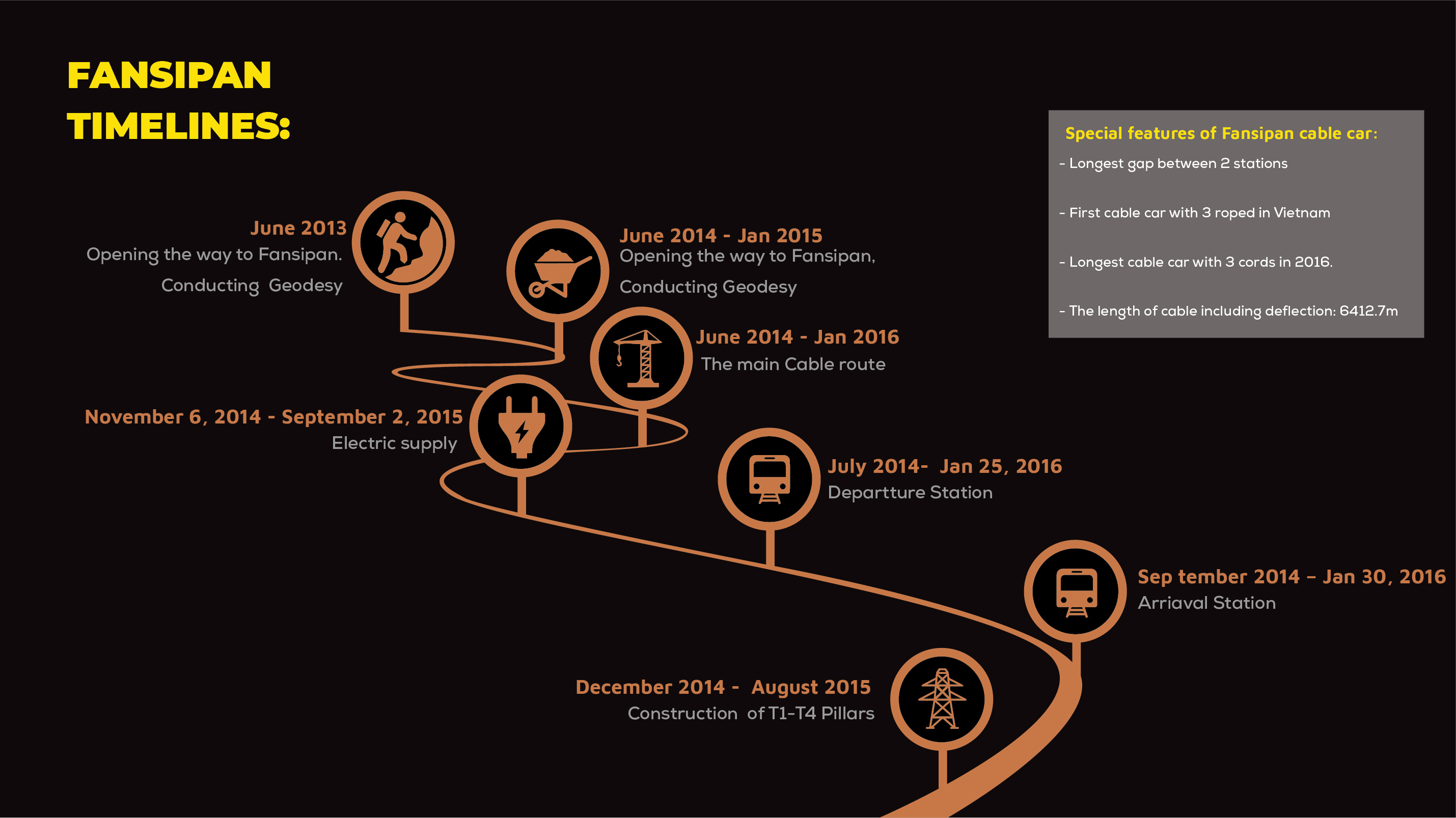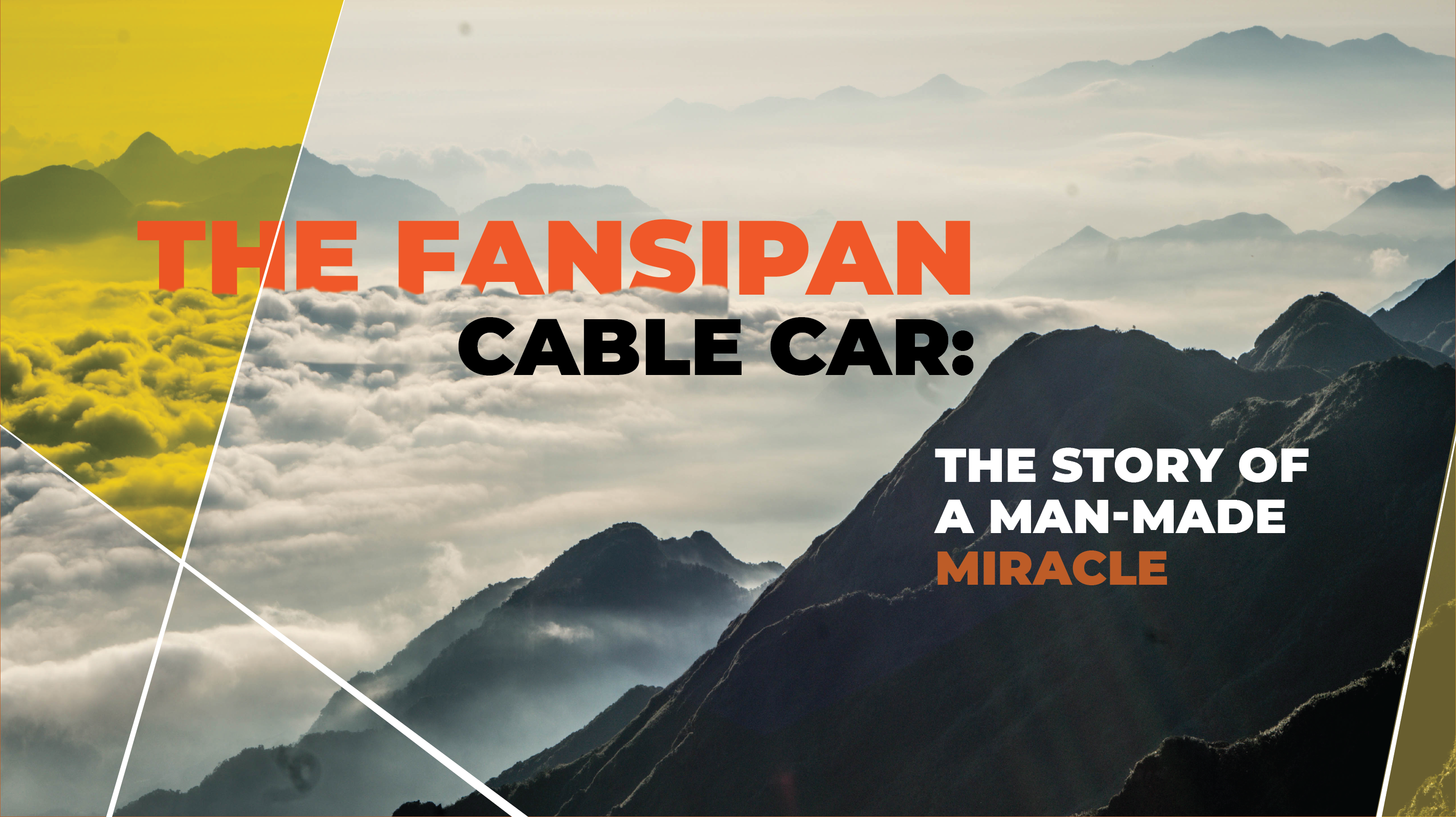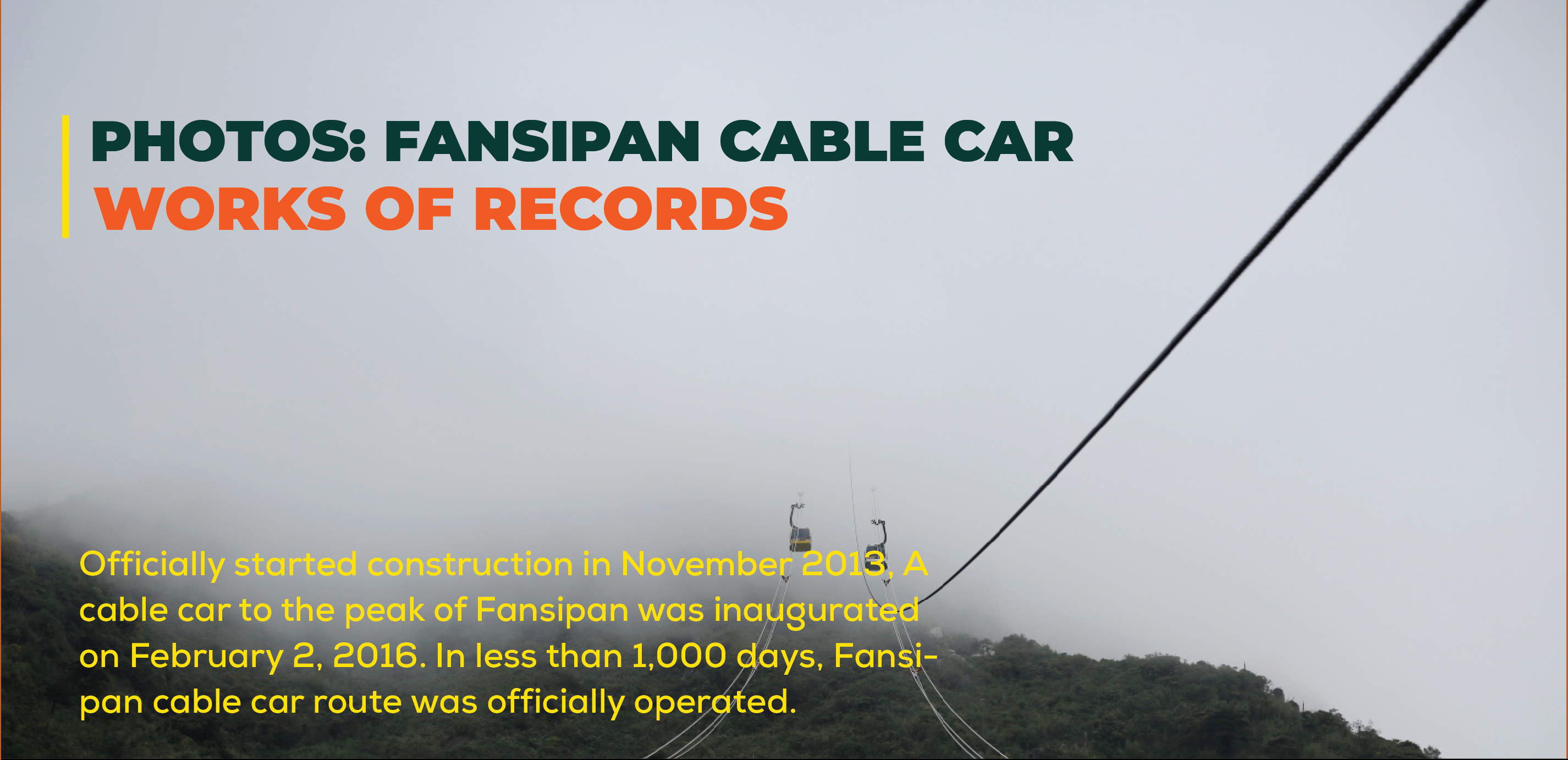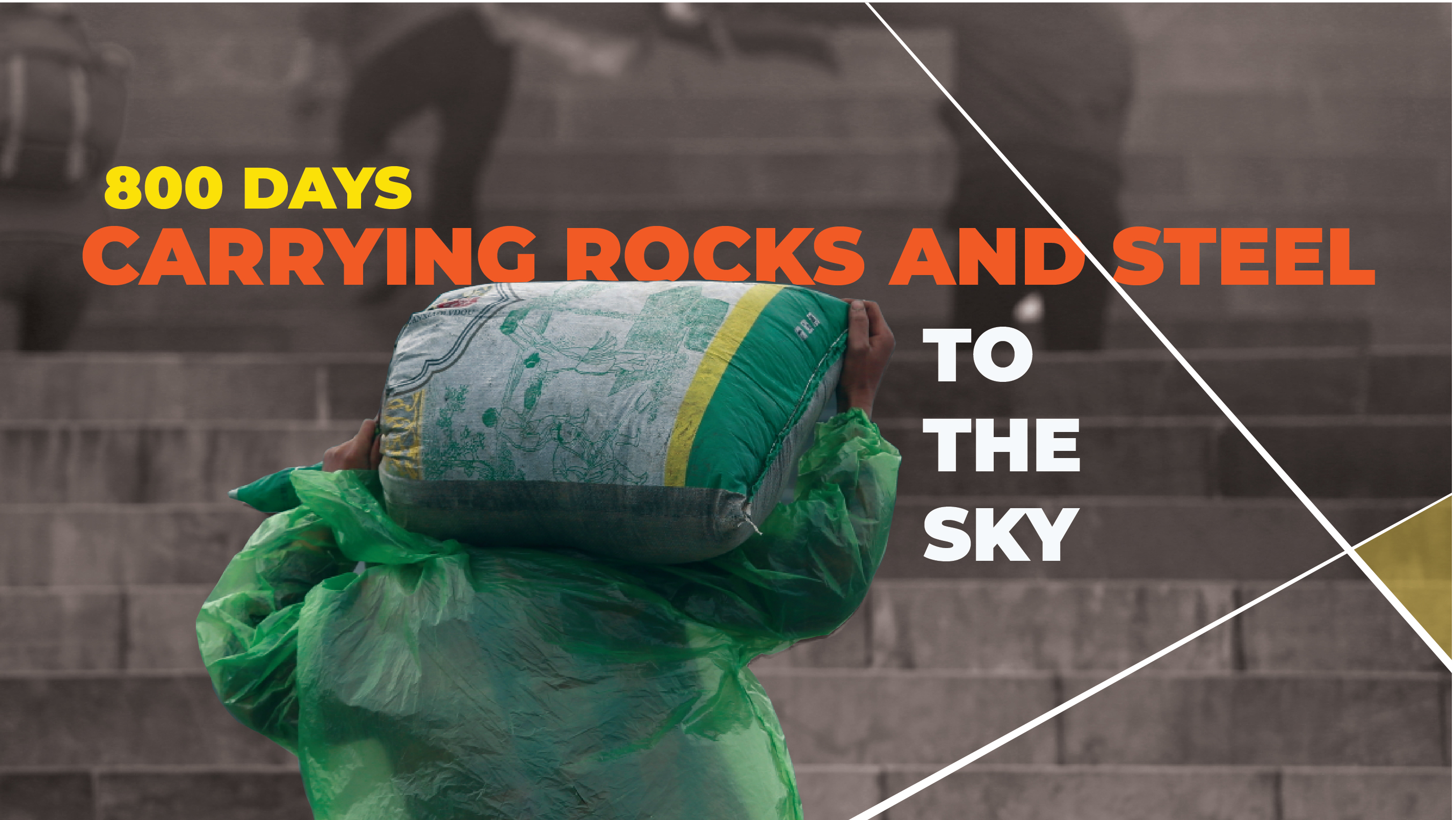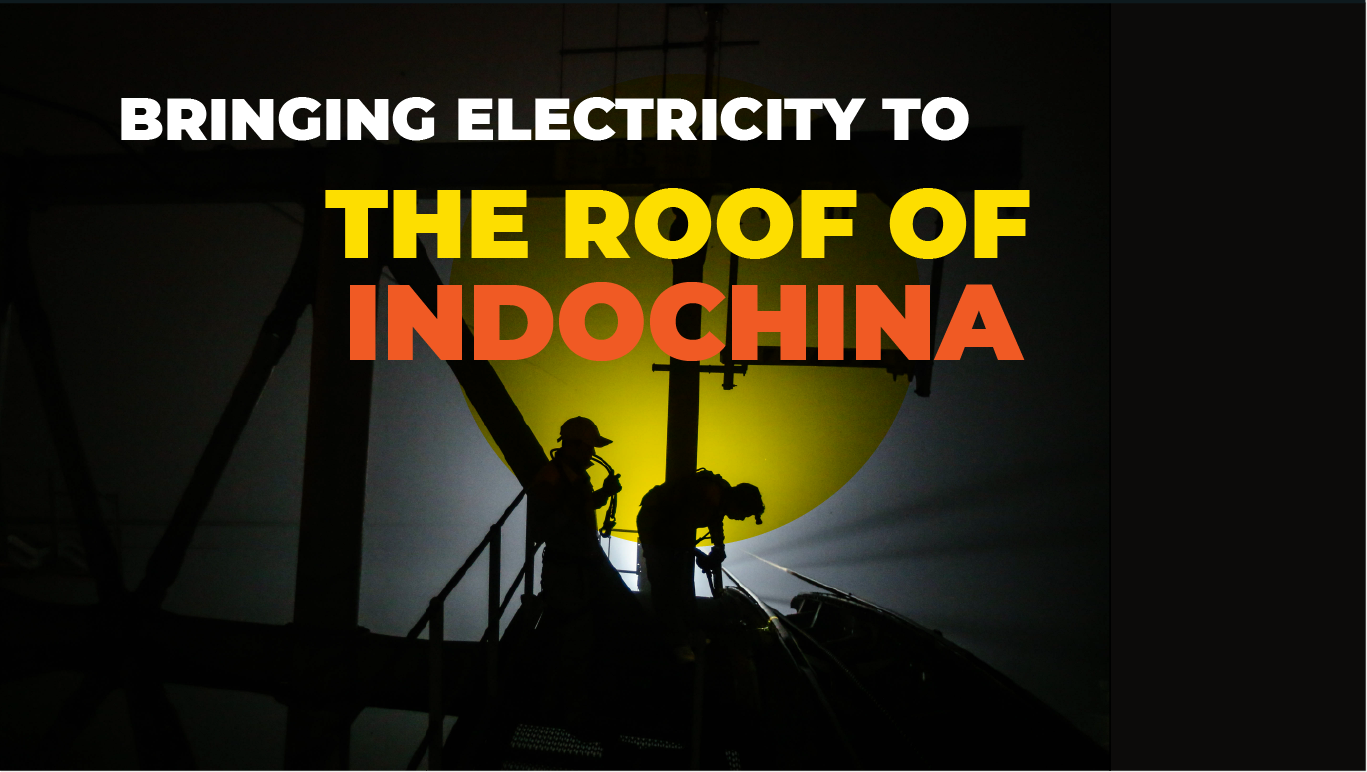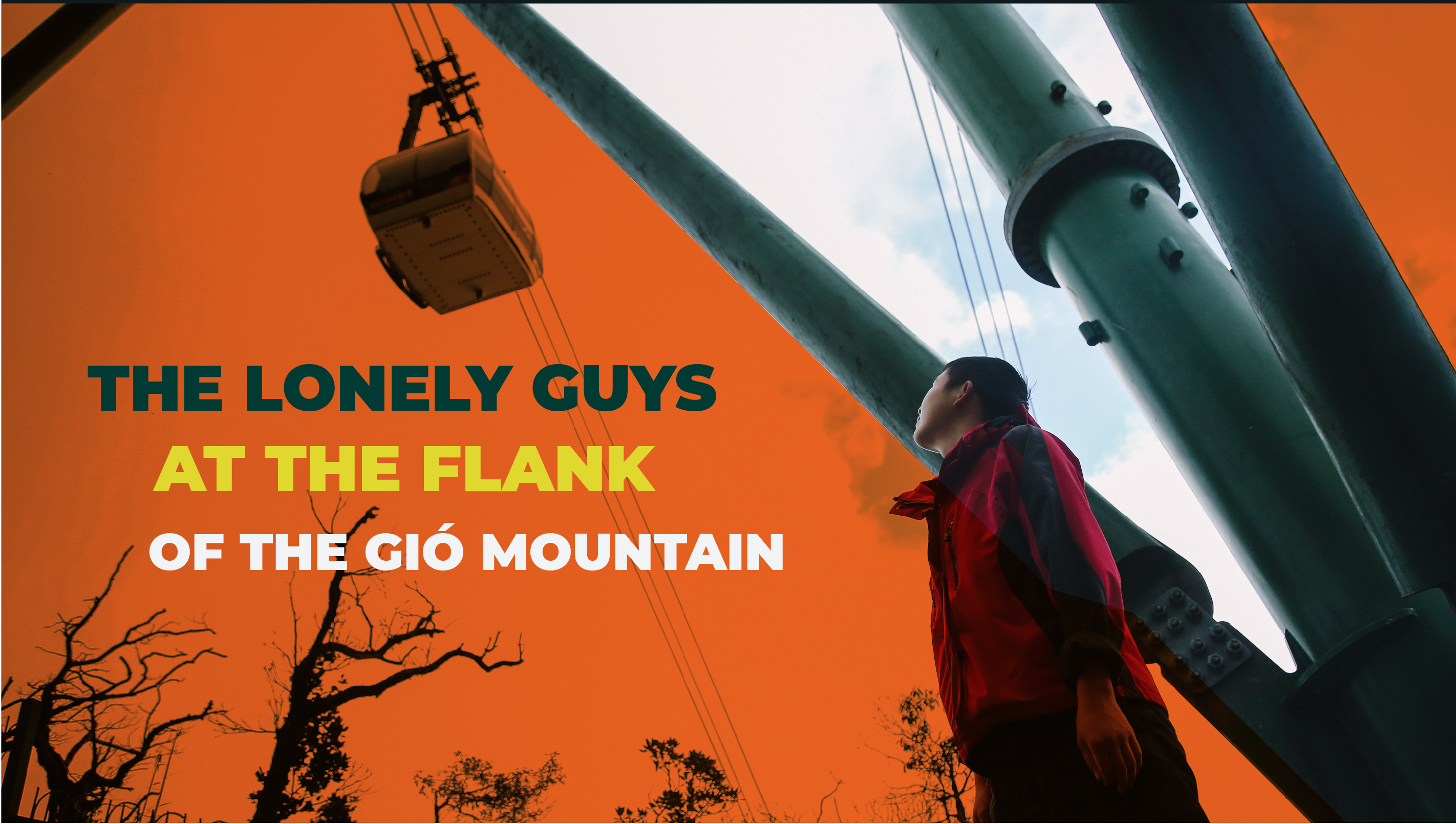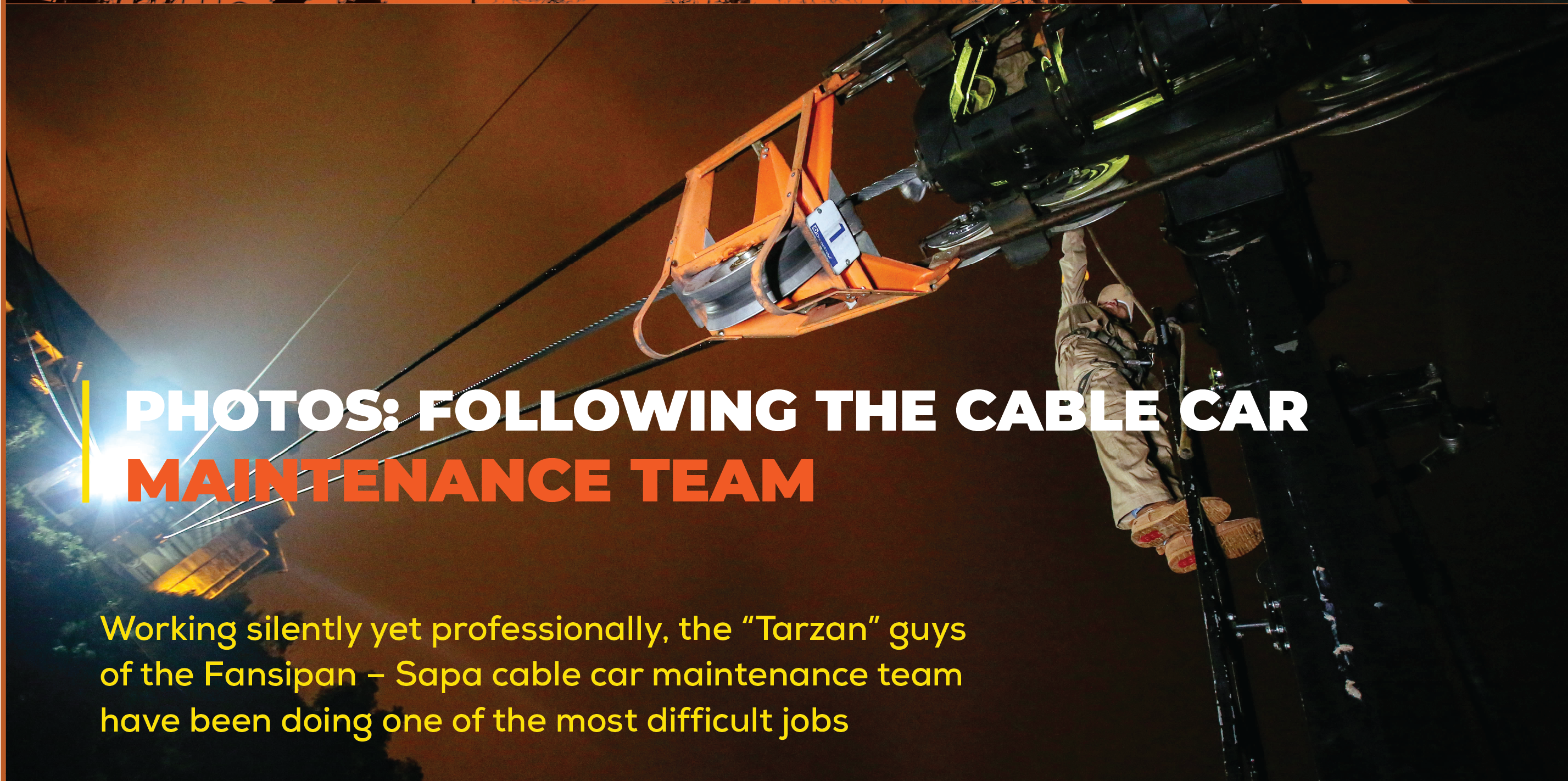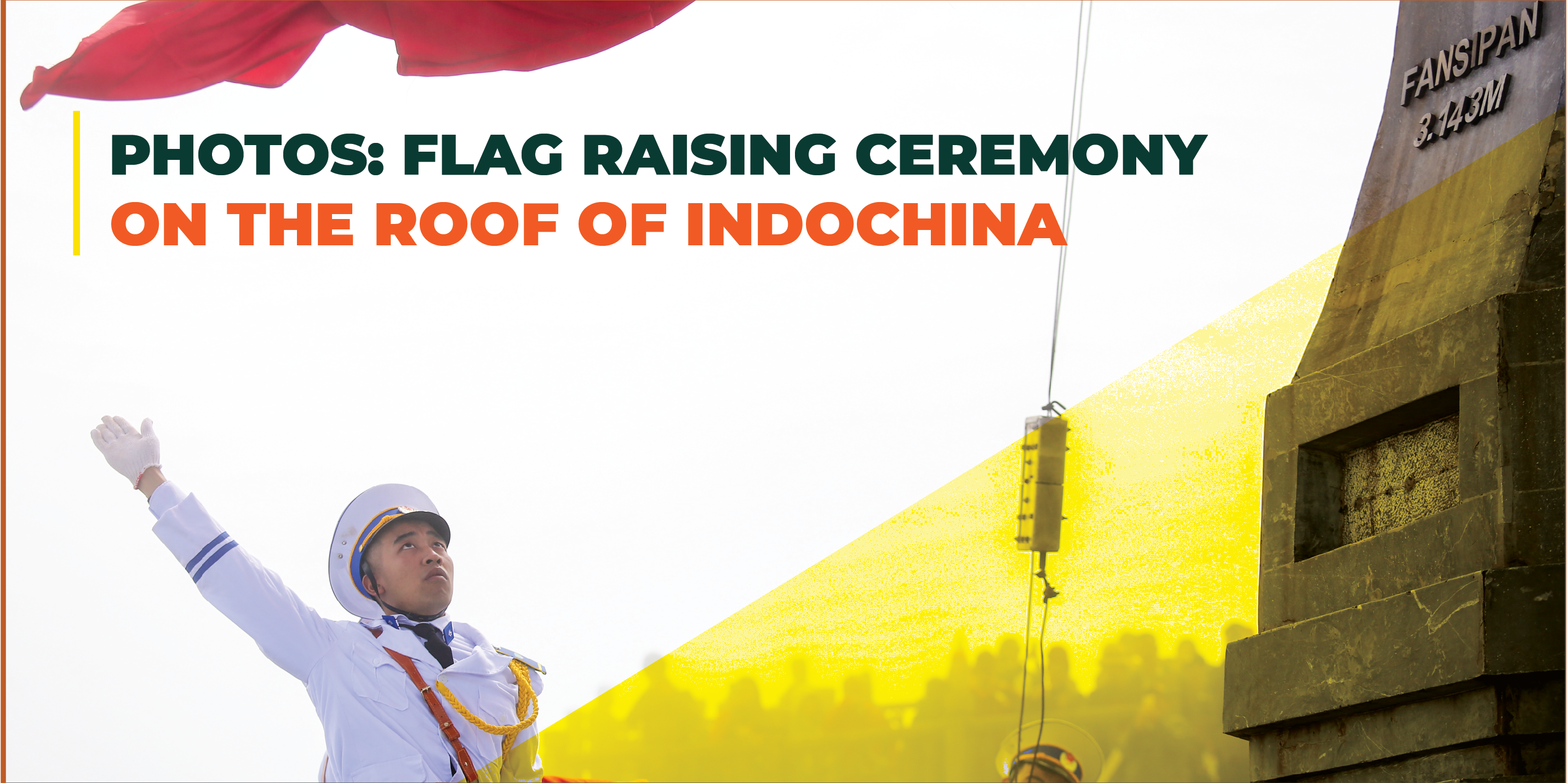Words of the editor
In February, 2016, the Fansipan cable car system was officially unveiled, connecting Sa Pa town in Lao Cai Province to the very top of Fanipan, the highest peak in what was once called Indochina (Vietnam, Cambodia and Laos). At the opening ceremony, Guinness World Records awarded two official certificates to the developers of the Fansipan Cable Car System: 1) for having the biggest height gap between its departure and arrival stations (1,410 metres); and 2) for being the world’s longest three-rope cable car at 6,292 metres.
These awards were merely the icing in the cake for a hugely momentous occasion. Riding the cable car, zipping across the Muong Hoa valley, tourists will be truly astounded by the all encompassing, awe-inspiring beauty in this heavenly mountainous realm. Now that we can fly through the air with the greatest of ease, it seems almost quaint to remember that this incredible feat of engineering was once considered an impossible dream. There were plenty of skeptics — both foreign consultants and local experts — who doubted this cable car would ever be realised.
TRiding on the cable car, you might not notice the cement ‘pillars’ which hold the cable cars aloft. These ‘T’ pillars are a reminder that this whole project is actually the result of years of backbreaking hard work by hundreds of engineers and workers who devoted themselves entirely to the project. These men had to live in the middle of the wilderness — a dense forest filled with danger — for over 800 days. Each day, they toiled away, carrying materials on their own shoulders and with their bare hands, giving their all to try and build the T Pillars and stations which would one day hold the cable car aloft.
Inevitably, they all have their stories to share of this extremely intense time which challenged them both physically and mentally. Besides the back-breaking work, and the day-to-day logistical challenges, there were lucky escapes and many emotional moments. One man was bitten by a poisonous snake in the middle of the Hoang Lien forest. Another slipped by the precipice of a deep ravine and was for a few moments literally dangling for dear life. The stories of these men and how they contributed to the success of the Fansipan Cable Car project is a reminder of the genius of human persistence. They showed incredible resolve and desire to overcome all of the considerable challenges that were thrown their way and in the end they accomplish what the naysayers said couldn’t be done.
In order to shed light on the unsung heroes of the Fansipan Cable Car project, a team of VietnamPlus reporters returned to Hoang Lien with a number of the workers and engineers who lived for over 800 days in the middle of a forest on the side of the mountain. It’s because of these men that now people of all ages and all walks of life can experience standing on the ‘the Roof of Indochina’.
And so, the story begins, as wild and as marvellous as the dense Hoang Lien forest
Through the ages, whoever has set on eyes on the mysterious Fansipan has longed to one day stand on its summit. Here we share the stories of the brave souls, who dared to dream of creating a ‘man-made miracle’ all the way up the precipitous slopes to the ‘Roof of Indochina’
First, let us explain the significance of Fansipan, which in the Vietnamese language is called Phan Xi Păng. Nobody can agree on the original meaning of the name. Some believe it evolved out of a description that was used by local mountain dwelling communities living in the area.They called it ‘Hua Xi Pan’, which means ‘giant teetering rock’. All around the northern province of Lao Cai and beyond, you can see its magnificent looming presence in the distance. It stands at a height of 3,143m above sea level. That makes Fansipan not only the highest mountain in Vietnam, but of all three countries that once formed Indochina — Vietnam, Laos and Cambodia. That’s why the French called it ‘the Roof of Indochina’. Fansipan is the pinnacle of the Hoang Lien mountain range, which runs across the north of Vietnam. It’s a fascinating geological area. It not only possesses an extremely varied terrain but also features a rich biodiversity with 2,024 floral varieties and 327 faunal species found up and down its densely forested slopes.
NAccording to the Institute of Geology in Vietnam, Fansipan and the Hoang Lien mountain range formed sometime between 250 and 260 million years ago. Today, the 30km-wide and 180km- long range runs from northwest of Vietnam between Lao Cai province and Lai Chau province. If seen from a height, the whole of Fansipan appears like a hand reaching up from a deep green forest below as if ready to grab the sky. It is a breathtaking part of Vietnam, filled with imposing, rocky peaks, and deep valleys and gorges, many of which are inaccessible. Naturally, adventure seekers have eyed Fansipan through the ages. Who couldn’t see this great mountain in the distance and wonder what it would be like to stand on its summit and survey the spectacular scenery all around them? No one knows for sure who was the first person to find their way to its summit. To reach the ‘rooftop of Indochina’ house over a century ago, French colonials would have relied on the guidance of the Hill Tribes living around the lower parts of the mountain. Undoubtedly the journey to the top would have been long and arduous and fraught with danger
We do know that Nguyen Tuan (1910 – 1987) trekked to the summit. A renowned Vietnamese author, and ranked as one of the nine most significant authors of contemporary Vietnamese literature, he wrote a letter to his friend Tô Hoài (1920 - 2014), a Vietnamese writer, playwright, screenwriter, journalist and correspondent, in 1964, waxing lyrical about hiking up Fansipan: “Dear Hoài, I climbed up and down the Hoang Lien mountain range for five days. My whole body is tired and my knees truly ache. At the peak, I got to see a beautiful azaleas flower. In my life, during each spring, I have never seen so many clouds and flowers. Up here it’s cold and it rains as hard as a storm. I always have to keep a bottle of strong liquor in my bag to keep myself warm from the mountain air…”
One year after Nguyen Tuan set foot on the apex of Fansipan, a mission to measure and map the Hoang Lien mountain range was launched. In 1965, a geologist from the Soviet Union, E.P. Izokh continued to crisscross the forests around Fansipan, while collecting data to better understand the geology of the mysterious ‘Hua Xi Pan’.
Slowly, but surely, over time, the forest trails that led to ‘the roof of Indochina’ gradually opened up. The time it took to reach the summit also shortened. But the feeling any person feels when standing on the mountain peak for the first time — does that ever change? That emotion is surely universal. The sense of accomplishment and perspective we gain when standing amongst the clouds and surveying ‘heaven on Earth’ is always an intoxicating and awe-inspiring feeling. Over the last few decades, the legend of Fansipan grew and grew. Stories spread. More adventurers and intrepid souls from far and wide travelled here, trekking through the forest, crossing over streams, and braving the slippery slopes, to reach the Roof of Indochina, where they could breathe in the clear, crisp mountainous air, and drink in the abundance of natural beauty that stretches as far as the eye can see.
To dream an impossible dream
For some people, to think of standing on the summit of Fansipan was to dream the impossible dream. Take the young writer and blogger, Vu Ngoc Anh. Born in 1987, Ngoc Anh has fractured his bones up to 150 times due to what is commonly known as brittle bone disease (osteogenesis imperfecta). In his autobiography Unbreakable, Ngoc Anh writes, "My life has always been associated with a wheelchair. I could not comfortably go to places where I myself wanted to go. I could only sit there, going where other people could bring me. Only in my wildest dreams, did I imagine the joy of being able to walk with my feet normally like so many others.” But filled with wanderlust, and a burning passion, Ngoc Anh began to travel on his own terms, exploring new lands in his wheelchair, and, sometimes, even on his knees.
Of course, he had heard tales of Fansipan and dreamed of traversing the Hoang Lien mountain range. “In 2010, my friend and I had a crazy plan to climb Fansipan on two knees through the forest trails. I could not follow the style of the standard overnight, two-day night itinerary, and I couldn’t hire someone to give me a ‘piggyback’. If I followed that plan, I would have had to stay in the forest for many days, until I gave up…” he wrote in Unbreakable.
So Ngoc Anh tried to forget about this ‘crazy plan’ but the thought of conquering Fansipan could never be completely vanquished. We should say that Ngoc Anh wasn’t the only one who thought that climbing to the peak of Fansipan was an impossible dream. In recent years, as more and more fit, young people gamely trekked to the top, sharing their accomplishments with friends and family back home through social media, Fansipan had become even more of a national icon. But for those who were less physically able, well, they could only live vicariously through the exploits of others. Elderly Vietnamese citizens could only shake their heads and smile wistfully when their children, or grandchildren, suggested they could still yet travel to the top of Fansipan. Like Ngoc Anh, they didn’t believe this dream could come true.
That was until February of 2016, when everything changed.
The day that dreams came true
Work had been underway for years. But for many people in Vietnam, the announcement came as surprise. It was still hard to imagine it could be true. A three-rope cable car system that connected the town of Sapa to the peak of Fansipan? But that day arrived in February, 2016. In one fell swoop, the journey to conquer the ‘roof of Indochina’ went from being an overnight and two-day long expedition to a 15 minute ride.Among the first group of guests invited to experience the cable car was Vu Ngoc Anh — yes, the ‘glass bone boy’, who had been waiting for, and dreaming of, this day, for so many years. His crazy and impossible dream of standing the summit of Fansipan was about to become a reality.
After 15 minutes of sitting on the cabin, floating over Muong Hoa valley, feasting his eyes on the stunning scenery all around, the cabin arrived at the funicular station, which actually sits just beneath the peak. Ngoc Anh looked up. From the station, there are 600 stone steps leading up to the very peak of the 3,143m summit. Ngoc Anh climbed out of his wheelchair and waved away offers of assistance and began to climb on his own.
“I climbed, step by step, walking on my knees. Every step hurt. It felt like there were all kinds of rubble stabbing into my knees, cutting through the fabric of the jeans that I thought would protect me,” he recalled later. “It took me over an hour to crawl to the very top of Fansipan. My fellow travellers cheered me on applauded and congratulated me when I made it. They wanted to take pictures with me, and shake my hand, but I couldn't see anything anymore — my ears were buzzing and my eyes were blurred…”
Eventually, Ngoc Anh composed himself and surveyed the awe-inspiring view. The impossible dream had been realised. Sometime later, Ngoc Anh would hear that the cable-car project, which had helped him to fulfil a life-long ambition, had faced opposition from certain quarters.
Some critics believed the three-wire cable-car system would be the the death knell for the trekking routes through the primeval forests. But the old trails and the cable car are not mutually exclusive. They can — and do — coexist. Those who are healthy enough, and have the time, can still satisfy their passion for traversing the precipitous slopes of Fansipan, navigating their way though the wilderness to the summit the ‘old fashioned way’.
“The cable car is helping those who are not so fit to stand on the peak of Fansipan,” says Ngoc Anh, who adds that climbing the mountain is still a worthy challenge for trekkers. “They might think, why should we climb up to take photos from the top, when the cable car ferries so many people up and down, but they success is a process, and not a event.”
For Ngoc Anh, and many others, the cable-car is literally a god-send, a man-made miracle that he could never have imagined.
But Ngoc Anh may well still wonder, how on earth did they actually construct a cable-car system through the wilderness of Hoang Lien mountain range, and all the way up to the top of Fansipan?
The answer is hundreds of engineers and workers, many of whom devoted themselves entirely to an incredibly challenging engineering project — one that some people believed could not be achieved. For over 800 days, they had to live in the forest, bathing in icy cold water, toiling away on a daily basis, sometimes carrying materials on their own shoulders, pushing themselves to the very limits.
They all have their stories to share of this time. It was an incredibly intense experience for them all. Looking back, many said that they felt at times like they were living permanently at the ‘the foot of T2 pillar’ or somewhere else in the wilderness. There were dicey, life threatening encounters with some wild life and many close calls. In spite of the dangers, they banded together and continued to push this project onward, sometimes inch by inch, with Herculean efforts.
It’s because of these unsung heroes that the Fansipan cable car — considered an insurmountable challenge by so many — could be completed. Today, the sight of the cable car running up to the ‘Roof of Indochina’ is a symbol of human persistence and ingenuity. That’s why we wanted to share the stories that highlight their bravery and show how nothing could thwart them taking on “mission impossible”.
 Documentary Fansipan cable car
Documentary Fansipan cable car
